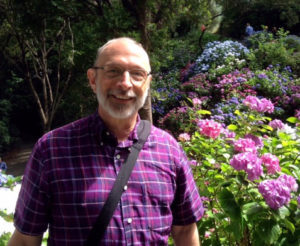Fr. Nicholas Glisson, M.A., M.Div., Ph.D.
Fr. Nick is the first diocesan priest ever to minister to our parish. He hails from Central Florida, where he served in the Diocese of St. Augustine from the time of his ordination in 1979 until 1991, when he first came to Berkeley to pursue his doctoral studies at the GTU after earning an M.A. in Liturgics from the University of Notre Dame.

Fr. Nick in New Zealand
He has experience in campus ministry at the University of Florida, and served as pastor in a small town in Florida. Most recently, Fr. Nick was pastor at St. Lawrence O’Toole-St. Cyril of Jerusalem, in Oakland, California for 12 years.
Fr. Nick has a previous connection with our parish—he wrote his doctoral dissertation under the direction of the late Fr. Michael Morris, O.P., a beloved priest of the parish and instructor at DSPT. In fact, Fr. Michael’s connections enabled Fr. Nick to do extensive research in England on his topic, “The Architect as Liturgist,” about the English Gothic Revival architect, Augustus Pugin.
Fr. Nick was granted his doctorate in 1998. However, during his six years at the GTU he realized that he felt more at home in the Bay Area than in Florida. After spending a year teaching at his alma mater (St. Vincent de Paul seminary in South Florida), he was “incardinated” in our Diocese, where he has served as Parochial Vicar of Saint Francis in Concord and the Catholic Community of Pleasanton. Fr. Nick also served on the diocesan committee that oversaw the planning and construction of the Cathedral of Christ the Light.
As for his avocations, Fr. Nick loves to hike and (motor)cycle, and has a fascination with railroads and model trains. He is an avid reader, a water colorist, and a classical music lover. His mother’s family hails from both Naples and Ireland, and his ancestors on his father’s side emigrated to Virginia from Southwest England in the 1650s.
